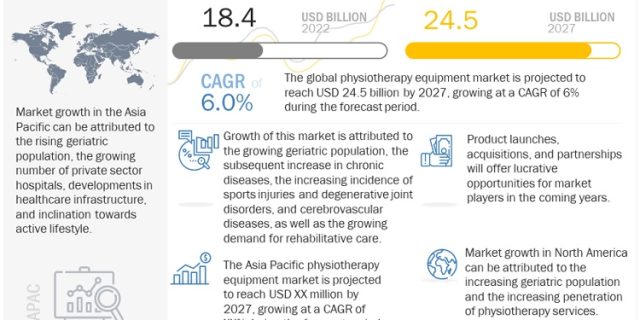
The physiotherapy equipment market is rapidly expanding, projected to grow from $18.4 billion in 2022 to $24.5 billion by 2027 at a 6.0% annual rate. Several key drivers are fueling this growth, including the rising elderly population, increasing prevalence of chronic diseases, more sports injuries and degenerative joint disorders, and heightened demand for rehabilitative care. However, unstable reimbursement policies, personnel shortages, and competition from alternative therapies like acupuncture could restrain market expansion.
A major growth driver is the growing need for rehabilitative care to improve strength, mobility and manage conditions like asthma or post-surgery recovery. As healthcare providers integrate rehab into their continuum of care to enhance outcomes and reduce lengths of stay, demand for physiotherapy equipment is increasing.
Download a PDF Brochure: https://www.marketsandmarkets.com/pdfdownloadNew.asp?id=65250228
Unstable insurance reimbursement creates challenges, with variable coverage leading some patients to face high out-of-pocket costs or visit limits that hinder their progress in therapy. Alternative treatments like acupuncture, offering benefits like low cost and high compliance, provide competition for physiotherapy.
The market landscape is evolving with new technological advances like virtual reality, robotics, exoskeletons and interactive video games creating opportunities for innovation. Leading players like Colfax, Zimmer MedizinSysteme, Zynex, Performance Health and ITO are driving product development.
The equipment segment, including electrotherapy, ultrasound and exercise therapy devices, dominates the market. Musculoskeletal applications form the largest clinical segment due to rehab needs for injuries and disorders. Physiotherapy and rehab centers are the biggest end-user category using advanced equipment.
Europe currently leads regional growth driven by countries like Germany, the UK and France, while Asia-Pacific is expected to see the highest future growth rate. Factors like active lifestyles, aging populations, service penetration and healthcare reforms are propelling the European and Asian markets.


